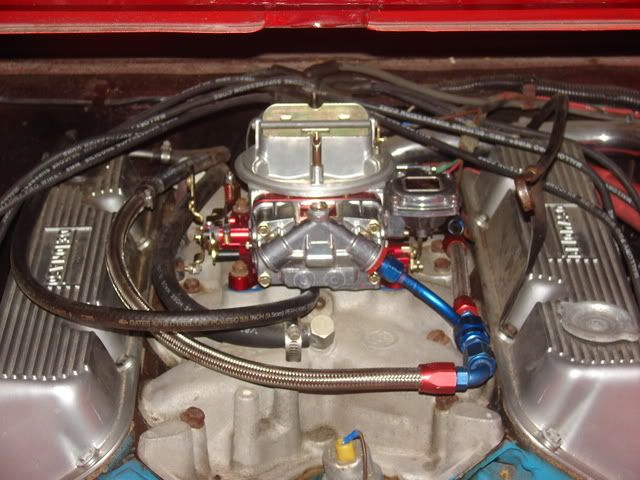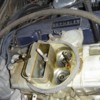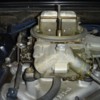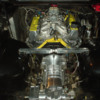I'm not being argumentative, I want to be a little more thorough and explain my recommendation.
The 351C 4V is not a Weezer (oops, I meant Windsor) and its not a SBC. Comparing the 351C to any other motor of the same displacement doesn't work, the same rules don't apply. The cylinder heads are that different. The best motor to compare a Clevo to is a 396 Rat motor.
The 4300D carb installed by Ford on the 351C was also used on 460 Fords; it is about a 750 CFM carby. It is a little bit bigger carby than the Rochester Quadrajet. Installing a Holley 780 on a Boss 351 netted a gain of only 10 BHP compared to the 4300D, and this was most likely due to the richer jetting of the Holley, not because it was a larger carburetor.
While the Boss 351 in the US had a 4300D carb, the Boss 351 in Australia had a 780 Holley borrowed from the Boss 302. Ford also sold a 780 Holley over the counter in the US for the 351C via their OHO parts program. The recommendation for the 351C has always been 750 CFM ever since its introduction. The guys with really hot Clevelands upped that to 850 Holleys.
The earliest "non-boss" 351C 4V motors (M code) had Autolite 4300A carbs, rated at 630 cfm, they were definitely under-carbed, and struggled to rev to 6 grand. The earliest 4 barrel Clevelands produced in Australia also used the 4300A carby. US Ford switched to the 4300D carb in late 1971. By the time the XC Falcon was under production (1976) Ford Australia had switched to a Carter Thermoquad rated at 750 CFM.
Hall Pantera sold a 600 Holley, along with the Edelbrock Performer intake, DeTomaso valve covers & Pantera air filter as an engine dress up package way back when, and as far as I can recollect Gary's was the only shop anywhere selling a 600 Holley for a 351C.
Outside the Pantera world, in the mainstream where Mustangs, Cougars, Torinos & Montegos roamed, the Ford performance shops all recommended 750 Holleys, and these were heavier vehicles, the majority of which had automatic transmissions.
Keep in mind, the 351C 4V likes headers with 1 7/8" or 2" primaries. 2" primaries on a Weezer or a SBC is an apostasy, but its
de rigueur for a 351C 4V. Doesn't it make sense that a motor that likes a "bigger" exhaust system may like more intake capacity as well? This motor likes more of everything compared to those "other" motors of similar displacement. This was a serious high performance motor designed for mass production, those cast iron cylinder heads will support 750 BHP naturally aspirated. Do that with a set of weezer heads, or a SBC double bump head.
Anything under 650 CFM is definitely under-carbing a Cleveland. Sure you can get by with the 670 carbs, and one or two Pantera shops sell 700 CFM Holleys for the Pantera. Since a street motor spends most of its time at lower rpm the difference is not going to be noticeable. But the 750 Holley is not over-carbureting a 351C, not at all, it won't bite you, I guarantee it. The 351C really likes a dialed in 750. The same way a Clevo wakes up when you install a healthy cam, the Clevo wakes up with the 750 too, but can remain docile & drivable when the jetting is dialed in. Even Ford on two continents installed 750 carbs on their hydraulic lifter cammed Cleveland motors.
Long Live the Clevo
Cleveland Symphony Orchestracowboy from hell







